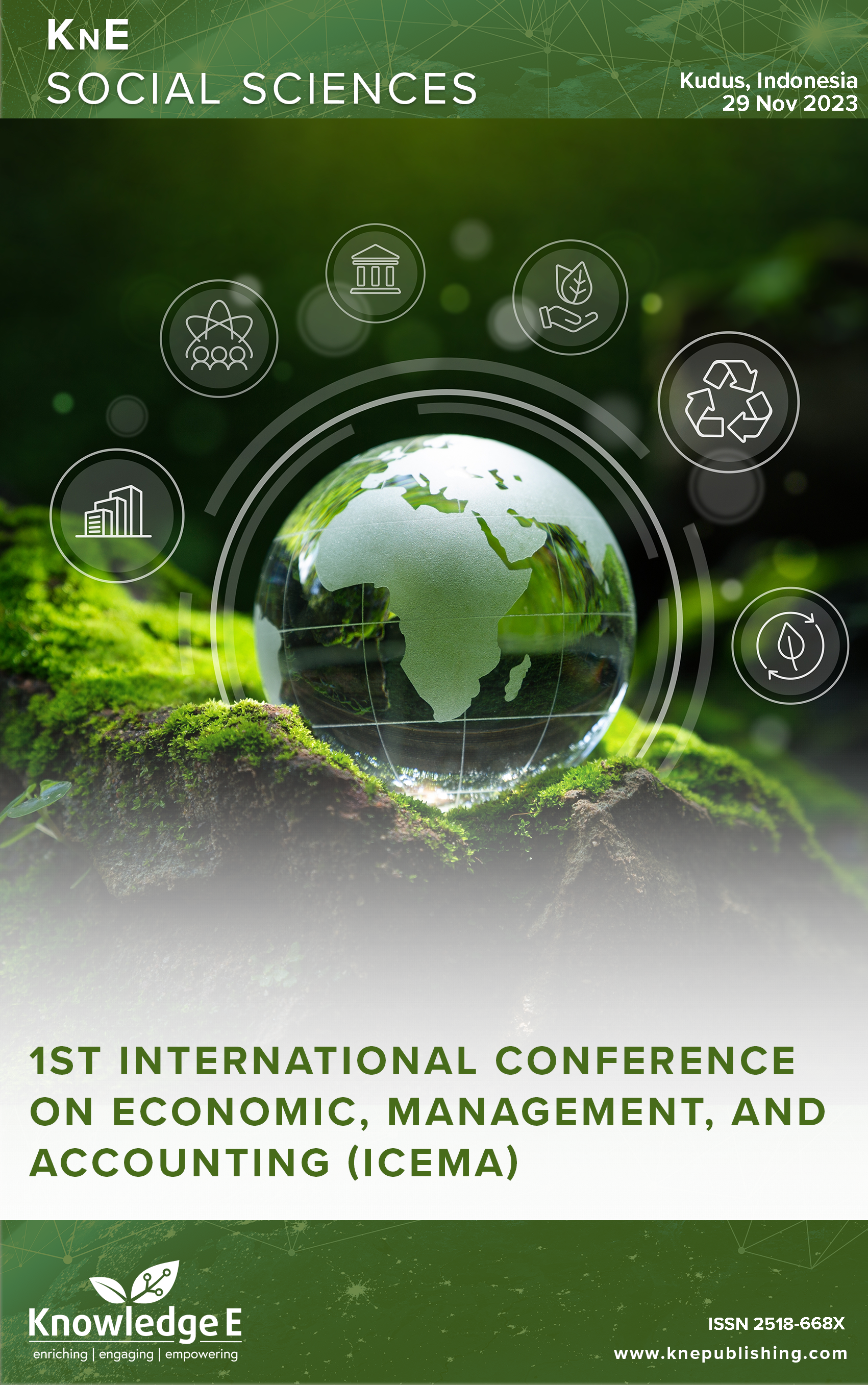Managing a Sustainable Business Through High Job Performance and Perceived Organizational Justice: A Case Study At PDAM Kudus Central Java Province
DOI:
https://doi.org/10.18502/kss.v9i17.16311Abstract
The level of job performance (high or low) can reflect the level of organizational performance (high or low), while the job performance is affected by perceived organizational justice. There are three dimensions of organizational justice: distributive justice, procedural justice, and interactional justice. A lot of research has been done in this area on large companies (public companies/Tbk), international companies, and companies in big European countries, US, UK, etc. This research aims to add value to sustainable business (at BUMN/State-owned enterprises, especially at PDAM/Regional Water Company Kudus Regency Central Java Province) by examining the context of organizational justice and employee performance ( job performance). The PDAM company will have a sustainable business when it can produce the healthy water and give high service to the customers. It is a measure of high or low job performance. By involving 72 field and office employees, the research data were analyzed using multiple regression, to find the level of influence that reflects the indicators on the variables studied. The results of this research show that as hypothesized, procedural justice and perceived interactional justice have a positive and significant effect on employee performance. However, one hypothesis is not supported, namely, distributive justice does not affect employee performance, even though there is one positive and significant multiple effects. The main reason for not accepting this hypothesis is that the increase in job performance is not directly influenced by distributive justice such as reward justice. However, for employees of PDAM Kudus, job performance is more influenced by job satisfaction. This is demonstrated by the higher perception of procedural justice and perceived interactional justice which contains some indicators: process, procedures, fair policies, information, and effective interaction between employees and superiors as well. Research limitations and future research in this area will be discussed and suggested.
Keywords: organizational justice, distributive justice, procedural justice, interactional justice, and job performance
References
Colquitt JA, Le Pine JA, Wesson MJ. Organizational behavior: Improving performance and commitment in the workplace. United States: Mc; 2009.Colquitt, J.A. (2001) On the dimensionality of organizational justice: a contruct validation of a measuremen. Journal ofAppliedPsychology, 86(3),845–855. DOI: https://doi.org/10.1037//0021-9010.86.3.386
Moorman, R. H. (1991). Relationship between organizational justice and organizational citizenship behaviors: Do fairnessperceptions influence employee citizenship? Journal ofAppliedPsychology,76(6),845–855. DOI: https://doi.org/10.1037//0021-9010.76.6.845
Moran, J. W., & Brightman, B.K. (2000). Leading organizational change. Journal of Workplace DOI: https://doi.org/10.1108/13665620010316226
Learning:EmployeeCounsellingToday,12(2), 66-74.
Nasurdin,A.M.,&Khuan, S.L.(2007).Organizational justice as anantecedent of job performance.
Gadjah Mada International Journal of Business,9(3),335-353.
Noor, J. (2011). Metodologi Penelitian. Jakarta: Kencana.
Pareke,F.J.,&Suryana,P.(2009).Hubungan kausalitas antara keadilan organisasional, kepuasan kerja, &komitmen organisasional. Trikonomika, 8(2),96-102.
Puspowarsito,H.A.H.(2008).Metode penelitian organisasi. Bandung:Humaniora.
Quirin,J.J., Donnelley, D.P, & O’Bryan,D.(2001).Antecedents of organizational commitment: The role of perception of equity. Advancesin Accounting Behavioral Research,4,261–281 DOI: https://doi.org/10.1016/S1474-7979(01)04076-5
Skitka,L.J.,&Bravo, J.(2005).Anaccessible identity approach to understanding fairness in organizational settings. InK.vanden Bos,D. Steiner, D. Skarlicki & S. Gilliland (Eds.).What motivates fairness inorganizations?(pp.105-128). Greenwich, CT: Information AgePublishing.

